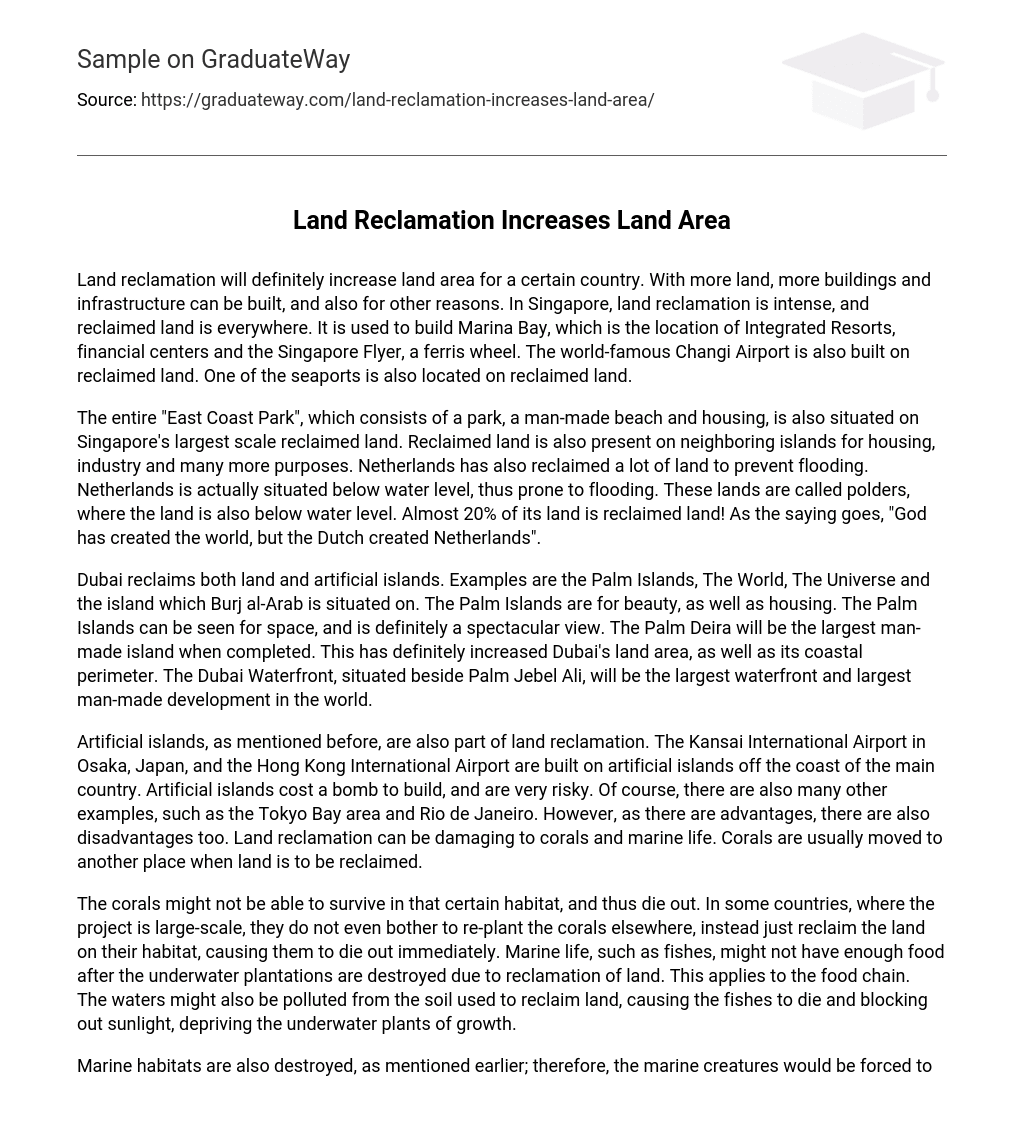Land reclamation is a successful technique used to increase a country’s land area, enabling the construction of new buildings, infrastructure, and other facilities. Singapore serves as an exemplary case where land reclamation is actively practiced, evident from the presence of reclaimed land in the region. Prominent developments on reclaimed land in Singapore include Marina Bay that houses Integrated Resorts, financial centers, and the iconic Singapore Flyer ferris wheel. Furthermore, Changi Airport, globally recognized for its excellence, is located on reclaimed land near one of the seaports.
The entire “East Coast Park” in Singapore, which includes a park, a man-made beach, and housing, is located on reclaimed land, the largest scale of its kind in the country. Reclaimed land is also utilized on neighboring islands for various purposes such as housing and industry. In order to prevent flooding, the Netherlands has also undertaken extensive land reclamation efforts. The country, which is situated below water level and therefore susceptible to flooding, has reclaimed a significant amount of land known as polders, where the land is also below water level. In fact, nearly 20% of the Netherlands’ territory is comprised of reclaimed land. This has led to the popular saying that “God created the world, but the Dutch created the Netherlands”.
Dubai is responsible for reclaiming land and creating artificial islands, such as the Palm Islands, The World, The Universe, and the island where the Burj al-Arab is located. The Palm Islands are designed to be visually appealing and serve as residential areas. These islands are even visible from space, providing a truly impressive sight. When finished, Palm Deira will become the largest man-made island in terms of size, further expanding Dubai’s land area and coastline. In addition to that, the Dubai Waterfront next to Palm Jebel Ali will become the world’s largest waterfront and man-made development.
Land reclamation is a costly and risky endeavor that involves constructing artificial islands like Kansai International Airport in Osaka, Japan, and Hong Kong International Airport. Tokyo Bay area and Rio de Janeiro also have examples of land reclamation. Despite the benefits it offers such as increased space, there are drawbacks to land reclamation. One drawback is the harm caused to corals and marine life during the process, requiring their relocation when land is reclaimed.
The corals in a specific habitat may not survive and consequently perish. In certain countries, large-scale projects do not prioritize relocating corals but rather reclaim the land on which they reside, resulting in immediate extinction. Subsequent to the destruction of underwater plantations through land reclamation, marine life, including fish, may encounter insufficient food supply, thereby disrupting the food chain. Moreover, water pollution may occur from the use of soil for land reclamation, leading to fish mortality and obstructing sunlight, which in turn hampers the growth of underwater plants.
As previously mentioned, the destruction of marine habitats forces marine creatures to seek new homes, leading to potential extinction for some species. Furthermore, certain species may struggle to find alternative habitats due to their limited ability to travel long distances underwater. While these reasons and examples may appear advantageous to humans, it is crucial to recognize the value of marine life. Consequently, we should prioritize safeguarding it instead of solely concentrating on our own benefits.





